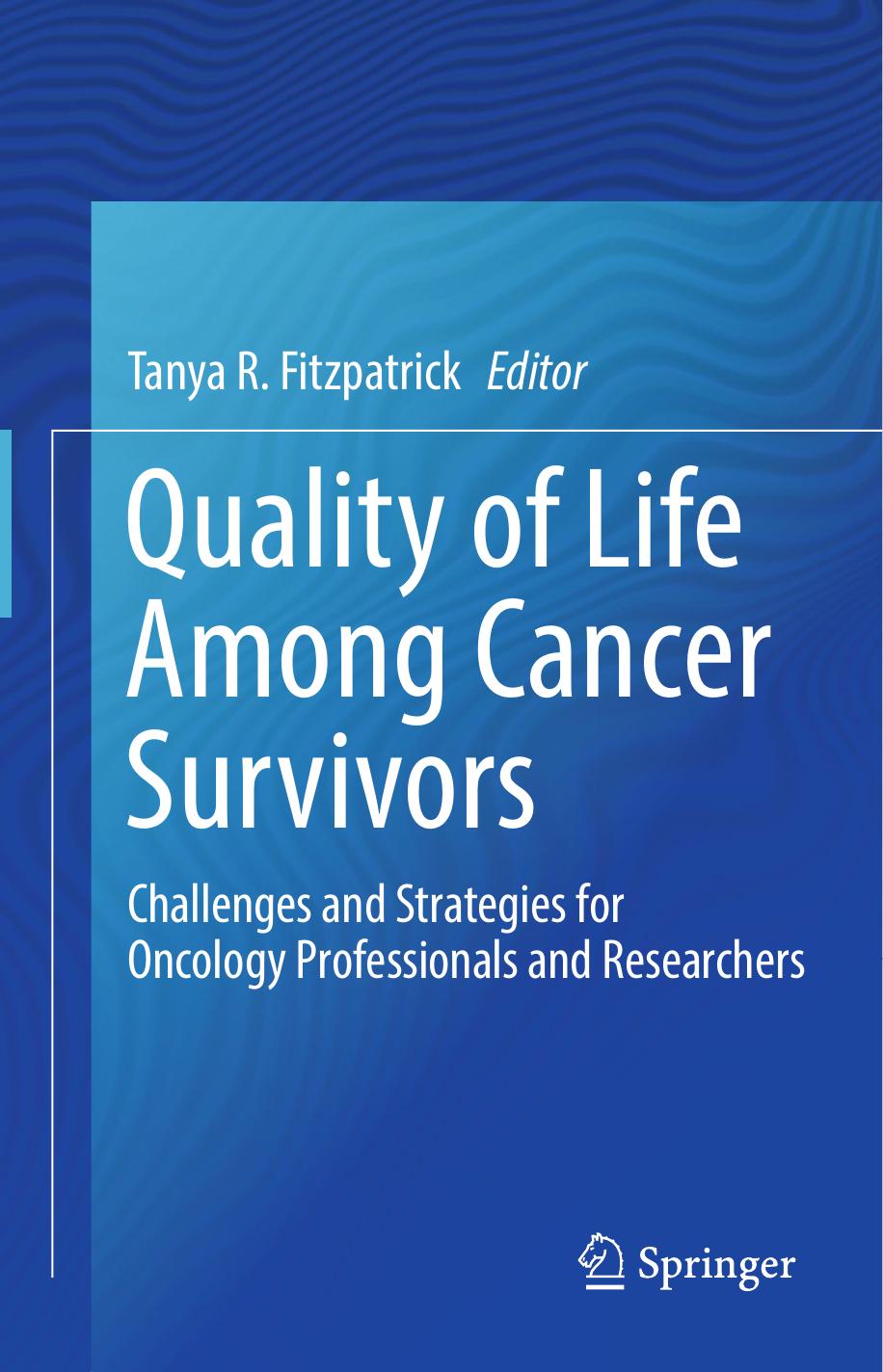Quality of Life Among Cancer Survivors by Tanya R. Fitzpatrick

Author:Tanya R. Fitzpatrick
Language: eng
Format: epub, pdf
Publisher: Springer International Publishing, Cham
Conclusions
Patients who have tongue cancer and have experienced the effects of complicated treatment methods such as that which has been described above may suffer from problems of communication, nutrition, work-related difficulties, and maintaining relationships at home and with friends, along with issues of isolation, loneliness, possible depression, and fear of recurrence. However, overall functional speech and swallowing outcomes of partial or hemiglossectomy and reconstruction are influenced by multiple factors including tumor size, site, method of reconstruction, and the use of postoperative radiotherapy. Although there is significant decline in speech and swallow measures postoperatively, the majority of patients recover to preoperative levels. Speech and swallow outcomes are directly associated with the volume and degree of mobility remaining after surgical interventions. Surgical rehabilitation whether by primary closure or free flaps for the immediate reconstruction of the tongue after tumor resection should aim at the maintenance of the mobility of the residual tongue and restoration of tongue bulk, in order to optimize the recovery of speech and swallowing functions. Primary closure of partial and hemiglossectomy defects is beneficial in maintaining higher mobility of the residual tongue to optimize speech. On the other hand, free flap reconstruction allows for volume and bulk modifications to the residual tongue required to optimize swallowing. Hence, when contemplating the method of reconstruction, both primary closure and free flap reconstruction of partial or hemiglossectomy defects should be considered.
Presently, the literature shows a wide variation in the level of evidence, methodological design, and reporting of results. There is a lack of standardized classification of tongue defects and functional evaluation methods. Moreover, there is little evidence comparing the functional outcomes of patients with partial and hemiglossectomy defects reconstructed with primary closure or free flaps. For patients who present with T1–T2 tumors , further evidence is required to determine the best method of reconstruction that takes into account speech, swallowing, and overall patient quality of life and morbidity, including donor-site morbidity. Future research in this field should employ standardized and reliable evaluation methods of speech and swallowing outcomes to further explore these factors by using multiple modalities in well-designed cohort and longitudinal studies. In addition, future investigations should further examine the psychological effects of the various surgical treatments and interventions on the quality of life among tongue cancer patients by conducting a qualitative inquiry using a large sample of patients. Nevertheless, oncology professionals and dental clinicians and researchers working with these patients should gain valuable information and insight from the review that was presented in this chapter. Further understanding of these issues will ultimately reflect on quality of care and more comprehensive services to this population of cancer survivors.
Download
Quality of Life Among Cancer Survivors by Tanya R. Fitzpatrick.pdf
This site does not store any files on its server. We only index and link to content provided by other sites. Please contact the content providers to delete copyright contents if any and email us, we'll remove relevant links or contents immediately.
When Breath Becomes Air by Paul Kalanithi(7294)
Why We Sleep: Unlocking the Power of Sleep and Dreams by Matthew Walker(5680)
Paper Towns by Green John(4191)
The Immortal Life of Henrietta Lacks by Rebecca Skloot(3843)
The Sports Rules Book by Human Kinetics(3613)
Dynamic Alignment Through Imagery by Eric Franklin(3511)
ACSM's Complete Guide to Fitness & Health by ACSM(3481)
Kaplan MCAT Organic Chemistry Review: Created for MCAT 2015 (Kaplan Test Prep) by Kaplan(3437)
Introduction to Kinesiology by Shirl J. Hoffman(3317)
Livewired by David Eagleman(3154)
The River of Consciousness by Oliver Sacks(3008)
Alchemy and Alchemists by C. J. S. Thompson(2924)
The Death of the Heart by Elizabeth Bowen(2921)
Descartes' Error by Antonio Damasio(2757)
Bad Pharma by Ben Goldacre(2744)
The Gene: An Intimate History by Siddhartha Mukherjee(2510)
Kaplan MCAT Behavioral Sciences Review: Created for MCAT 2015 (Kaplan Test Prep) by Kaplan(2501)
The Fate of Rome: Climate, Disease, and the End of an Empire (The Princeton History of the Ancient World) by Kyle Harper(2452)
The Emperor of All Maladies: A Biography of Cancer by Siddhartha Mukherjee(2446)
